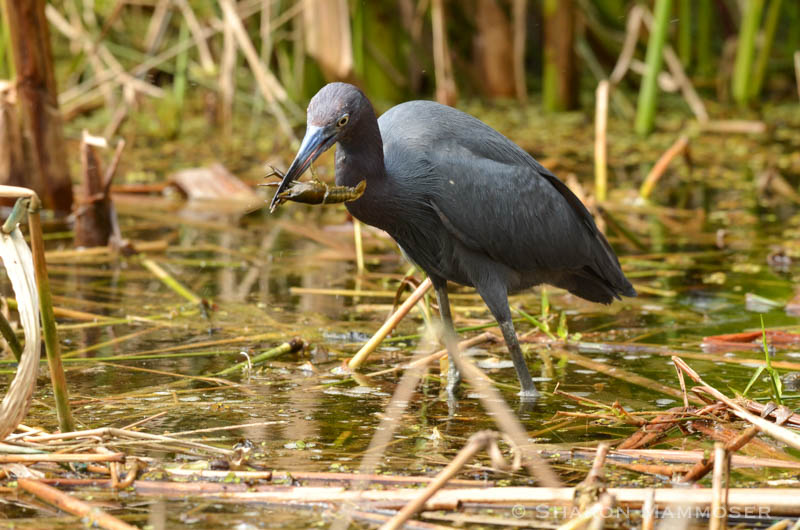This hunting bird was fun to watch. I would have been perfectly content to watch him for the entire afternoon, but after a little while, he snagged that big fish and flew off to a new location. Did you recognize this bird from last week’s puzzler as a Little Blue Heron?
Did you know that a Little Blue Heron is a species of bird and not a baby or little Great Blue Heron? When birds fledge from their nests they are as big as they are going to get so seeing a little bird does not make it a baby–it simply makes it a little bird. Young birds often lack the plumage of the adults but are roughly the same size.
Little Blue Herons are in the same family as Great Blue Herons–Ardeidae, and can be found in similar habitats. Little Blue Herons eat mostly small fish, but also amphibians, crustaceans and other invertebrates like dragonflies and grasshoppers.
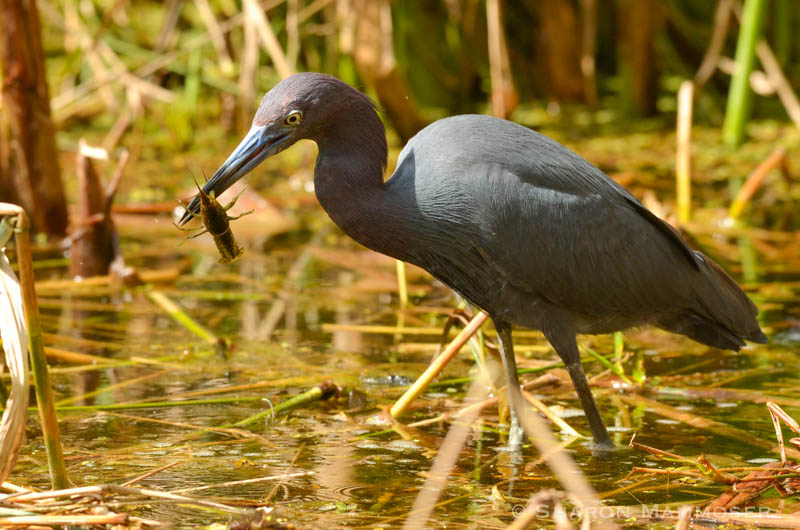
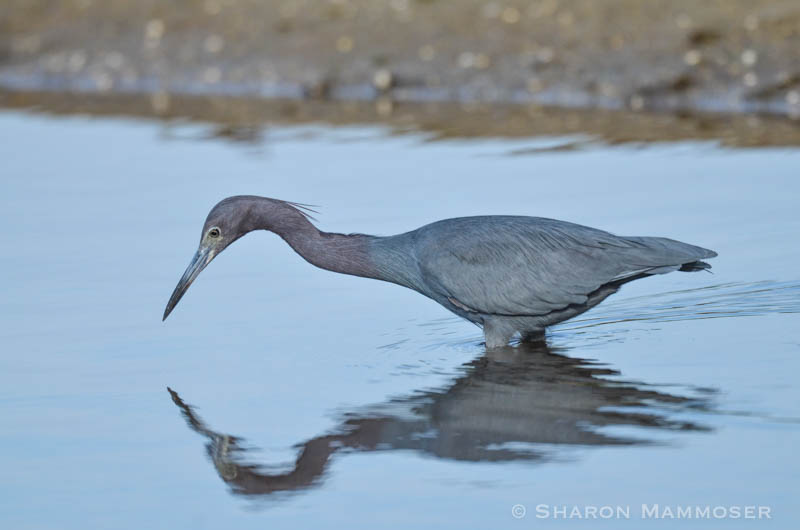
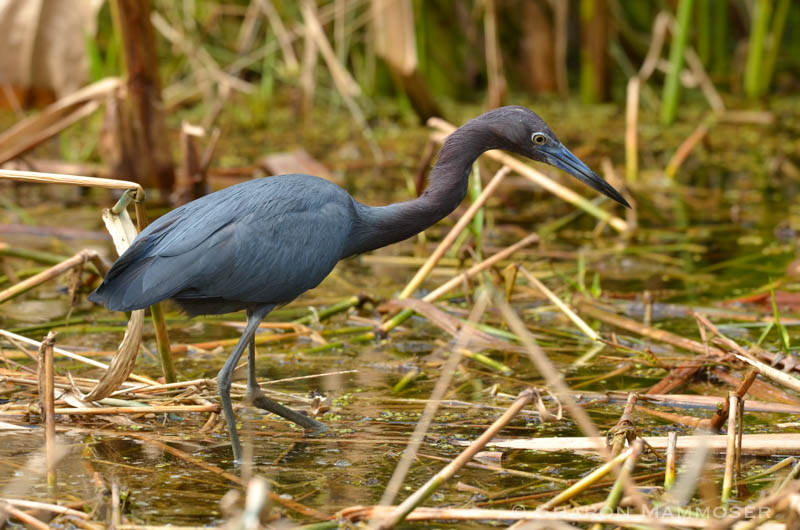
Little blue herons are 24 inches tall and have a daggerlike bill that is two toned with blue-grey at the base and black on the end. They have a maroon/purplish head and neck and body that is a dull slate blue color. They have yellow eyes and greenish legs. And just to confuse you even more, young little blue herons are white!
Look at some similar birds that are easily confused:


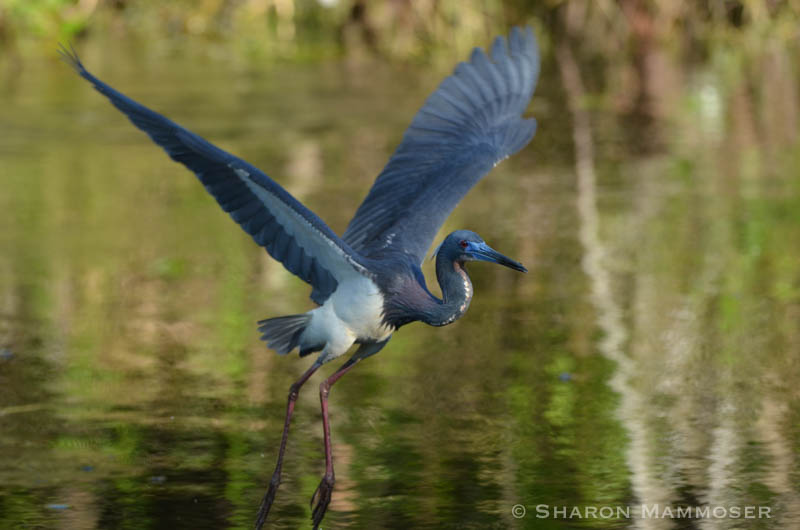
Another look at a Tri-color Heron. Notice the RED eye, reddish legs, brighter blue bill and if you see it fly, you can notice the white underparts.
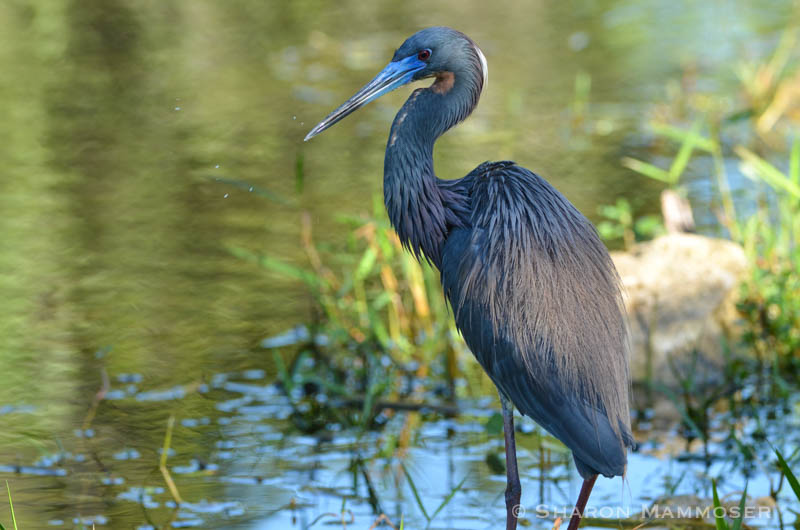
Reddish egrets, Trio-color Herons and Great Blue Herons are probably most confused with this bird.
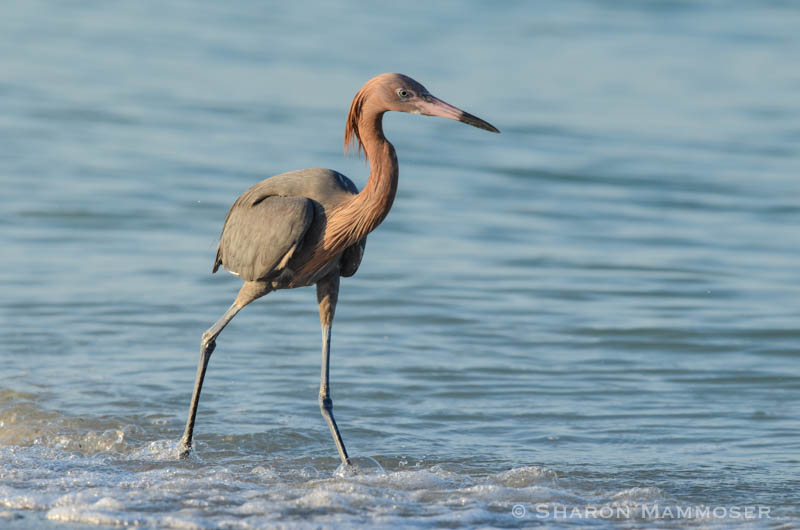
Okay, so look at this one again. See the difference? It’s definitely subtle and easy to mix them up.
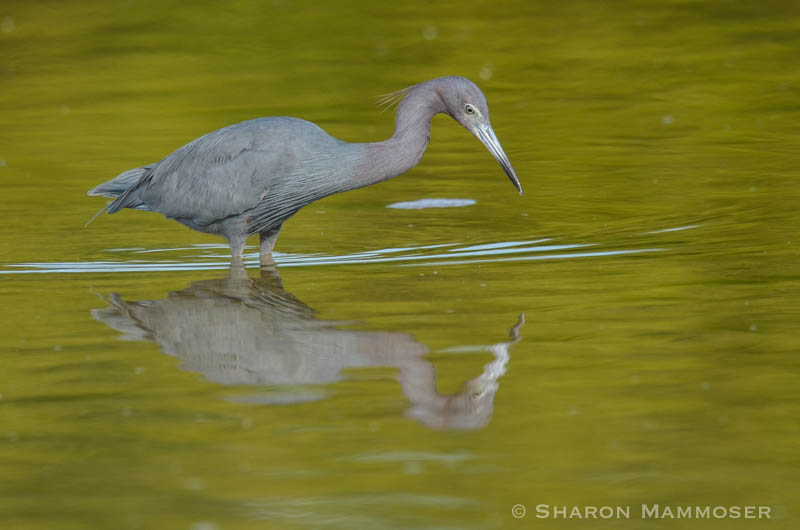
Hopefully that makes it a bit clearer but it’s hard to get good at identification unless–just like anything– you practice all the time. Let’s look at our next weekly puzzler–this one a smaller bird with a subtle song that I’m sure you’ve probably seen around. It’s a lot more common than the Little Blue Heron!


